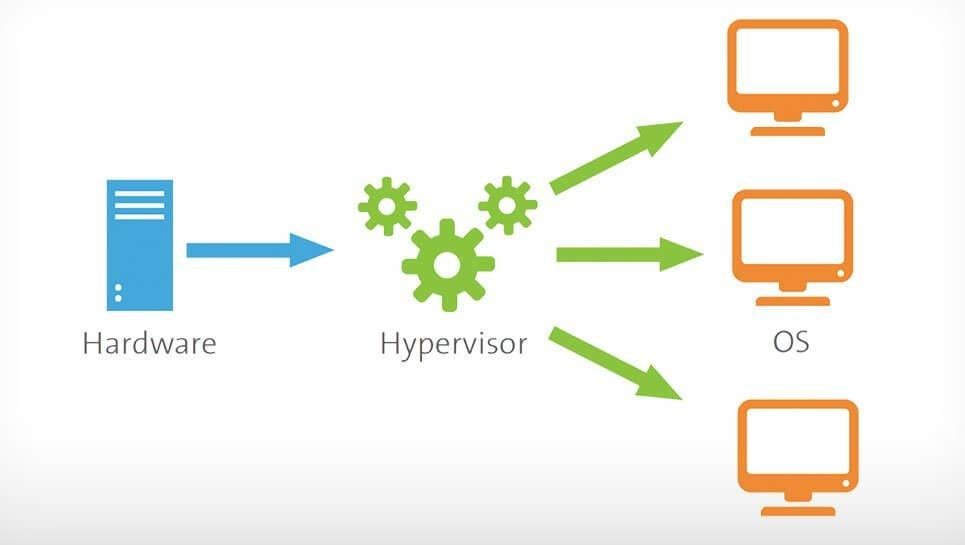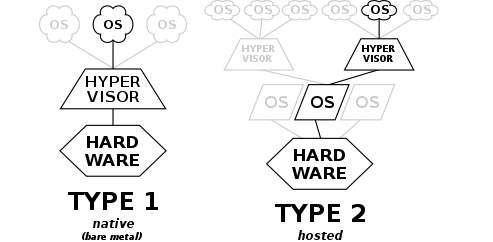In the modern digital landscape, it’s important to invest in platforms and solutions that will enhance your company’s resource management and secure your network. This need is where the concept of virtualization stemmed from. Virtualization is exactly what its name suggests – the process of making something virtual (Read more on What is Server Virtualization). In this case, that something is the servers in place that are used to process, store, and relay your data. Virtualization helps to create a virtual environment in which virtual machines can run off the resources of a singular physical server and provide individual virtual servers.
The process of virtualization relies on the use of the hardware resources of a server - which is the CPU, RAM, Networking, and storage in some cases – to be divvied up into smaller sections to allow virtual machines to isolate the given resources and create a guest operating system on top of the main host operating system of the physical server. This process is only possible through the use of a software layer between the host operating system and the guest operating systems created. This is called the hypervisor – but what is a hypervisor?

What Is a Hypervisor?
In simple terms, a hypervisor is a piece of software that creates and manages virtual machines on a physical host computer. This layer allows one host operating system to operate and manage multiple guest operating systems and applications using its physical hardware. Hypervisors create a virtual version of each of the physical hardware resources and allocate them to each virtual machine it creates. Think of it as a large building that is sitting idle and catering to the needs of only one person. This is a server that does not make use of virtualization, whereas, if you started renting out individual apartments within that building, the resources are fully optimized. The hypervisor is like the landlord in this analogy. It enables the isolated, secure, and resource-orientated use of a server’s hardware.
The purpose of a hypervisor – or virtual machine manager - is to ensure that each virtual server created can run independently and securely without interfering with one another and only making use of the resources allocated to them. In the analogy used earlier, it would be the same as using the same water and electricity but nobody else stepping into your shower or coming to use your kitchen.
How Does a Hypervisor Work?
Hypervisor is a core element of Hyperconverged Infrastructure (HCI). The concept may seem slightly complex but it is quite simple. Hypervisors simply relay the requests made from each virtual machine (software) to the host operating system (hardware) and seamlessly allow computing to carry on.

Sourced from Javatpoint
Two Types of Hypervisors
While hypervisors all practically serve the same purpose, they can however be separated into two distinct groups.
Type 1 Hypervisors
These are also known as native or bare-metal hypervisors. They run directly on the hardware of the host operating system to control the physical resources directly.
These are the most commonly used hypervisors as the direct contact with the hardware makes it more secure from cyber-attacks against the host operating system and because they tend to perform better. Most large companies make use of this kind of hypervisor technology for better scalability and efficacy in data centers and cloud environments.
Type 2 Hypervisors
On the other hand, type 2 hypervisors – also known as hosted hypervisors - operate on top of the host operating system and are installed as an application. A downside of hosted hypervisors is that they can be slower than bare-metal hypervisors. This is because of the extra layer of the OS that must be passed through. This category of hypervisor is usually used with software testing and regular home users that don’t require high latency.

Sourced from Wikipedia
The Benefits of Using a Hypervisor
Now that you know what a hypervisor is, why should you make use of one? There are multiple advantages to using a hypervisor:
- Resource Optimizing: Naturally, the first benefit to the use of a hypervisor is its ability to optimize your usage of resources adequately. Most servers have more hardware resources than they need and end up sitting idle and wasting company assets.
- Scalability: Creating virtual servers means that your company does not need a lot of physical space to operate and you will never have to worry about creating more physical servers to keep up with an expanding company.
- Speed and Efficiency: Hypervisors are virtual which means the creation and decommissioning of a new virtual machine as required will be quicker and easier. This helps your company keep a dynamic workflow going. The virtual setup also ensures that company resources are used in a cost-effective and energy-effective way as it can run numerous servers at the same time.
- Portability: With the advent of remote working conditions and ever-fluctuating network needs, hypervisors provide a flexible working environment through their virtual nature. Your company members can access and process data on your network wherever they may be at the click of a button.
Hypervisors are a critical part of modern-day computing and virtualization and work hard to reduce hardware wastage and provide a high-performance environment to extend and expand your company’s network.
Hyper-Converged Infrastructure
Convergence refers to the integration of multiple technologies in a system or on a device. This is the goal of most modern technology. Within a hyper-converged infrastructure (HCI), the computing resources are managed with the use of a hypervisor to push all your resources into a single software-define unified stack.
Choosing the right software from the correct hyper-converged vendors can be a tiring task. HCI vendors that can provide efficient and high-functioning infrastructure can be hard tome come by. Luckily, Sangfor boasts an array of hyper-convergence solutions that are ready for your use.
The Sangfor Hyper-Converged Infrastructure (HCI) is an innovative 3rd generation platform that converges computing, storage, networking, and security on a single software-defined stack - providing a simplified 1-stop software-defined data center solution tailored for all your business-critical applications.
Sangfor’s Managed Cloud Services then provides a globally distributed data center with all the convenience and flexibility of a public cloud combined with the security, control, and professional service of a private cloud.





